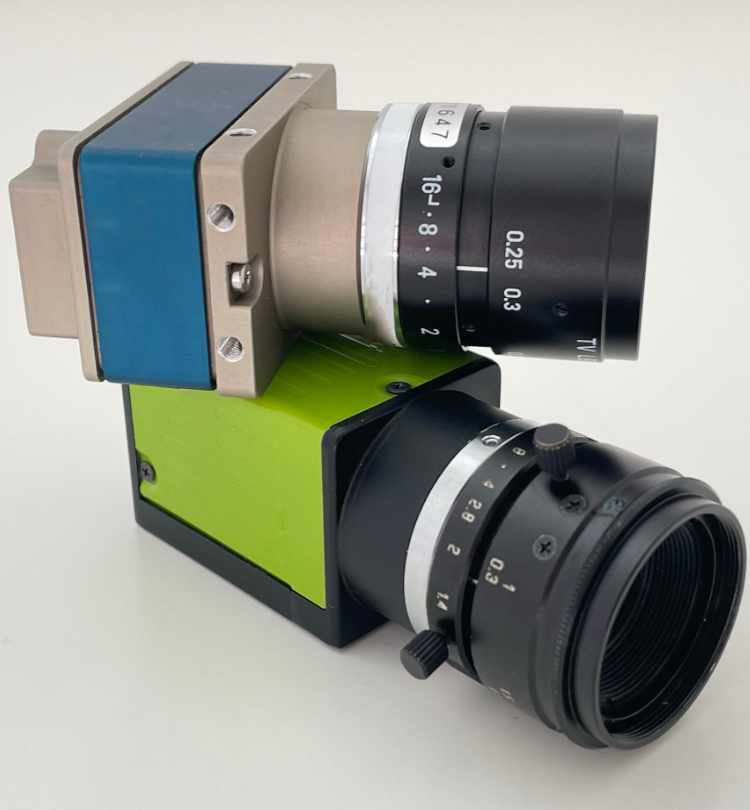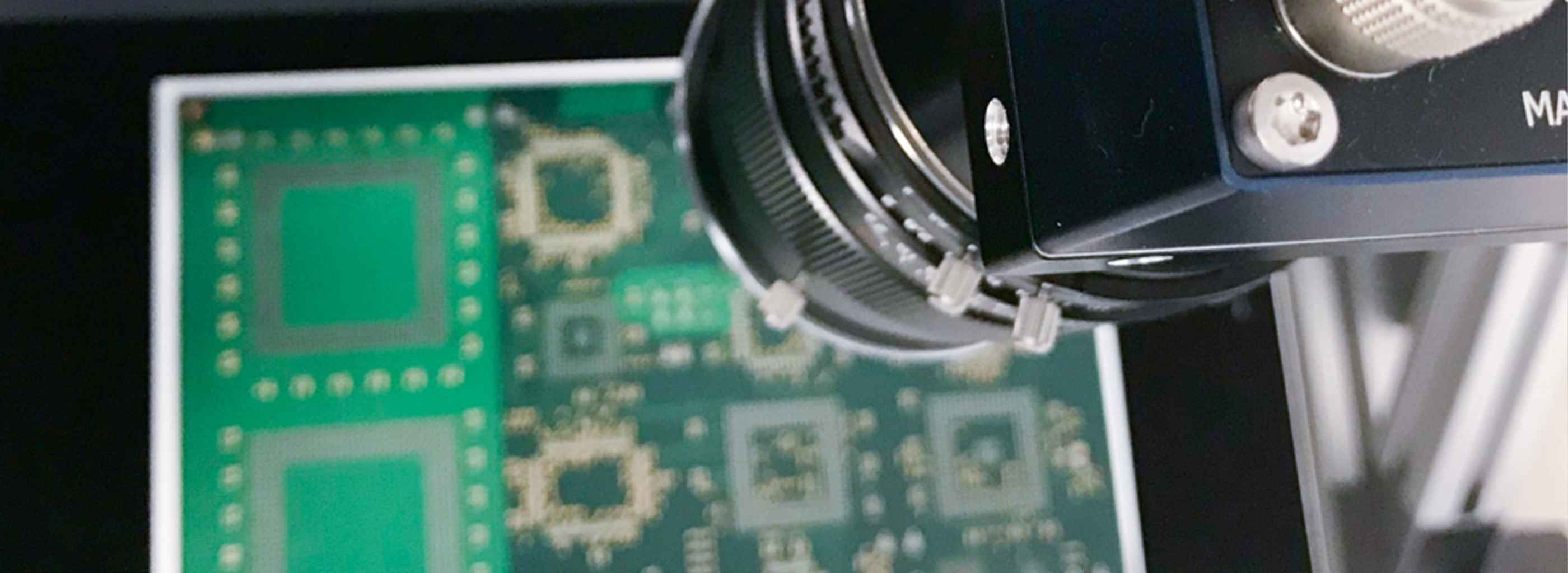
Camera
Monochrome and colour line scan cameras
Spectral sensitivities of line scan camera sensors
As with area scan cameras, there are similar camera technologies for line scan cameras to capture different spectral ranges.
Monochrome line scan cameras are specialised cameras that capture only grey scale images and are generally sensitive between 400-1000 nm.
Colour line scan cameras generate information in the visible range between 400-700 nm. Like monochrome sensors, colour line scan cameras are now all CMOS-based sensor technology. Flat panel display inspection and high quality print inspection require high resolution with a high line frequency of the camera.
InGaAs-based line scan sensors are specialised sensors designed to capture images in the near infrared (NIR) range between 900 and 1700 nm. Applications include specialist biomedical applications, wafer and solar inspection, and high-temperature inspection and anomaly detection.
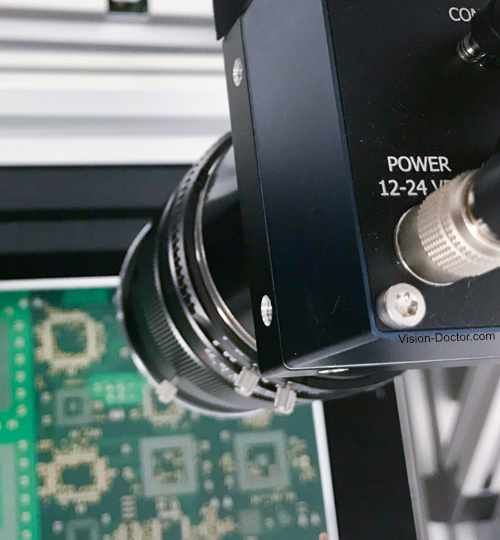
Types of detectors for line scan cameras
Line scan cameras use special sensors that capture images line by line. These sensors differ in architecture and functionality depending on the application and spectral sensitivity required. The main sensor types and technologies are
Single line sensor
for monochrome image acquisition
Dual or quad line sensors
Monochrome imaging with increased sensitivity
TDI monochrome sensors
16, 32, 64, 128 line arrays (stages) for maximum sensitivity
Dual line colour sensors
Affordable colour line scan camera with Bayer pattern concept
Trilinear colour line scan cameras
High-quality colour information with one line each for R, G and B
Prism-based colour line scan cameras
Highest colour fidelity, prism-based and without spacial separation between the sensor lines.
Multispectral line scan sensors
Four or more lines with different sensitivities for different wavelengths, for example R, G, B +NIR
Physical features of line scan sensors and camera mounts
Typical sensor resolutions for image capture are 512 pixels, 1K, 2K, 4K, 8K, 12K and 16K. Pixel sizes on the sensor range from 5 x 5µm, 7 x 7µm, 10µm x 10µm to 14 x 14µm. Where possible, the camera should have the largest pixels possible. For example, a 5µm pixel has a light active area of 25µm2, whereas a 14mm pixel has 196µm2, i.e. approximately 8 times the area and therefore 8 times the light sensitivity. As the image capture time of each line is often only a few µs, the light sensitivity is particularly important for line scan cameras.
With a resolution of 2048 pixels, the 14µm pixel sensor has a line length of approximately 29mm: The C-mount connection often used for industrial area scan cameras can no longer be used. From a line length of 20 mm, the cameras have an M42 mount or a Nikon bayonet, also known as an F-mount.
At line lengths of 8K or 12K resolution, smaller pixel sizes, e.g. 7µm, are increasingly being used again, as otherwise the sensor could no longer be exposed with an optic with an M42 or F-mount connection. The next standard would be lenses for medium format cameras, which would be extremely expensive. To increase light sensitivity, sensors with two or more lines instead of one line are also used, which can then combine the signal from several lines vertically without losing the physical resolution as with horizontal binning. The latest generations of line scan cameras also combine four sensor lines.
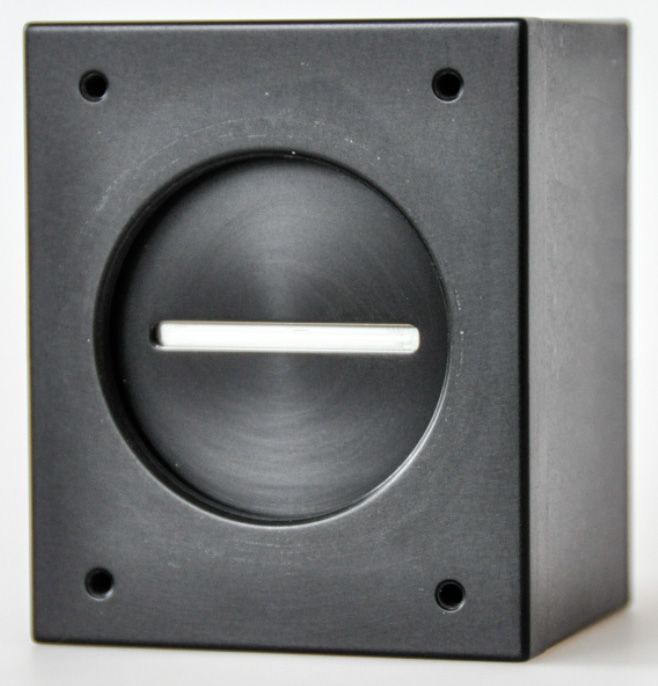
Monochrome line scan sensors
The simplest and most cost-effective option is to use a single line sensor, which is perfectly adequate for image generation.
However, line scan camera applications are often used at high web speeds where there is not enough light to expose the pixels. Dual line or quad line sensors capture four sensor lines simultaneously, but the brightness information is buffered accordingly and summed with a time delay to create the correct 'virtual single line'. The result is an image that is two or four times brighter.
With TDI (Time Delay Integration) line scan cameras, the lines are no longer exposed individually, but in larger blocks (stages) that the object passes through during the exposure. However, the stages are not triggered as individual lines, but as an entire image block. It is therefore essential that the movement of the object and the integration of the steps on the sensor are perfectly synchronised. Although this only works with flat objects, the object is also captured from different optical perspectives, so reflections on the object are averaged out. TDI sensors are many times more sensitive to light than single or dual line sensors.
Single Line, Dual Line,
Quad Line and TDI sensors

Dual line / Dual line colour sensor
Due to the resolution of single-line RGB sensors, the single-line principle has been modified for this type of sensor. A dual-line sensor is used, with one line sensitive only to green, while the other line is alternately equipped with a 1-chip colour camera and a colour filter mosaic with red and blue.
This allows the light sensitivity of the camera to be further increased, while keeping the structure of the sensor simple. The disadvantages of this technology are comparable to those of the single line, with better overall resolution and sensitivity.
Dual Line Colour

Trilinear line / quadlinear line scan sensor
Three lines are arranged one above the other on a single sensor, each sensitive to red, green and blue. The colour line scan camera now has maximum sensitivity at full resolution and produces very nice colour images.
A small disadvantage of this technology is the distance between the lines. In high quality cameras, this is one to three times the pixel size. This can have a disturbing effect when recording images if the movement of the tape is not linear, as the lines are recorded with a time delay to compensate for the line spacing. Edge artefacts are possible.
Square linear sensors are also common. In addition to the three lines for red, green and blue, there is another line that is sensitive in the infrared range.
Tripple Line & Quad Line

3CMOS or 4CMOS lines with prism
An integrated triple prism beam splitter distributes the incoming light to three separate sensors, each receiving either red, green or blue light.
The benefits of this technology are high quality colour images with full physical resolution, as the sensors can be exposed and corrected for different lengths of time. Tight manufacturing tolerances and precise alignment of the prisms and sensors are important in order to display the image on three sensors with sub-pixel accuracy. Non-linear motion can also be captured with this technology, as the sensors are acquired simultaneously.
Disadvantages are the large size of the camera and higher manufacturing costs.
Prism-based line scan cameras
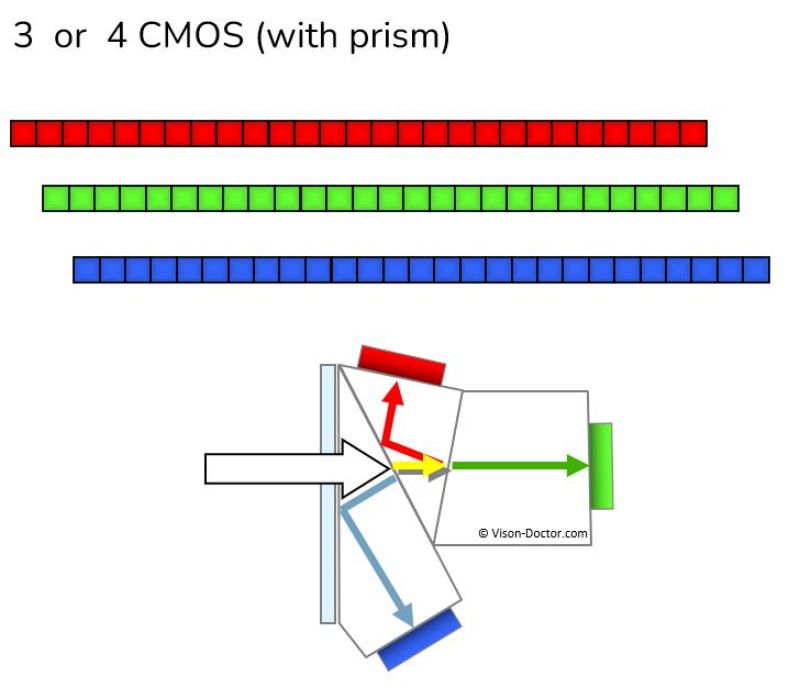
Need to buy the right camera?
Vision-Doctor.com is a private, independent, non-commercial homepage project and not a technology provider or system integrator. Suitable technologies and further professional support can be obtained from the companies & partners listed below.
If necessary, I will be happy to provide a quick recommendation, contacts and brief information.
